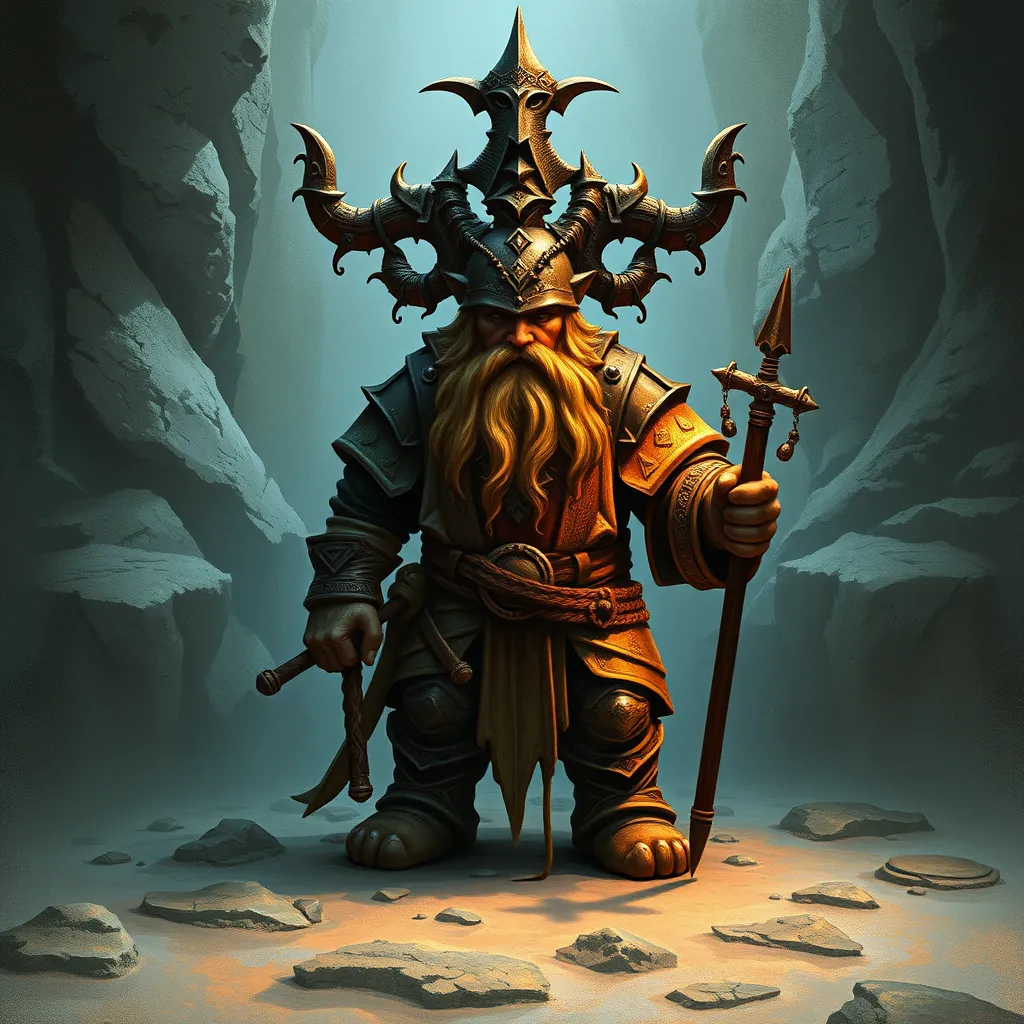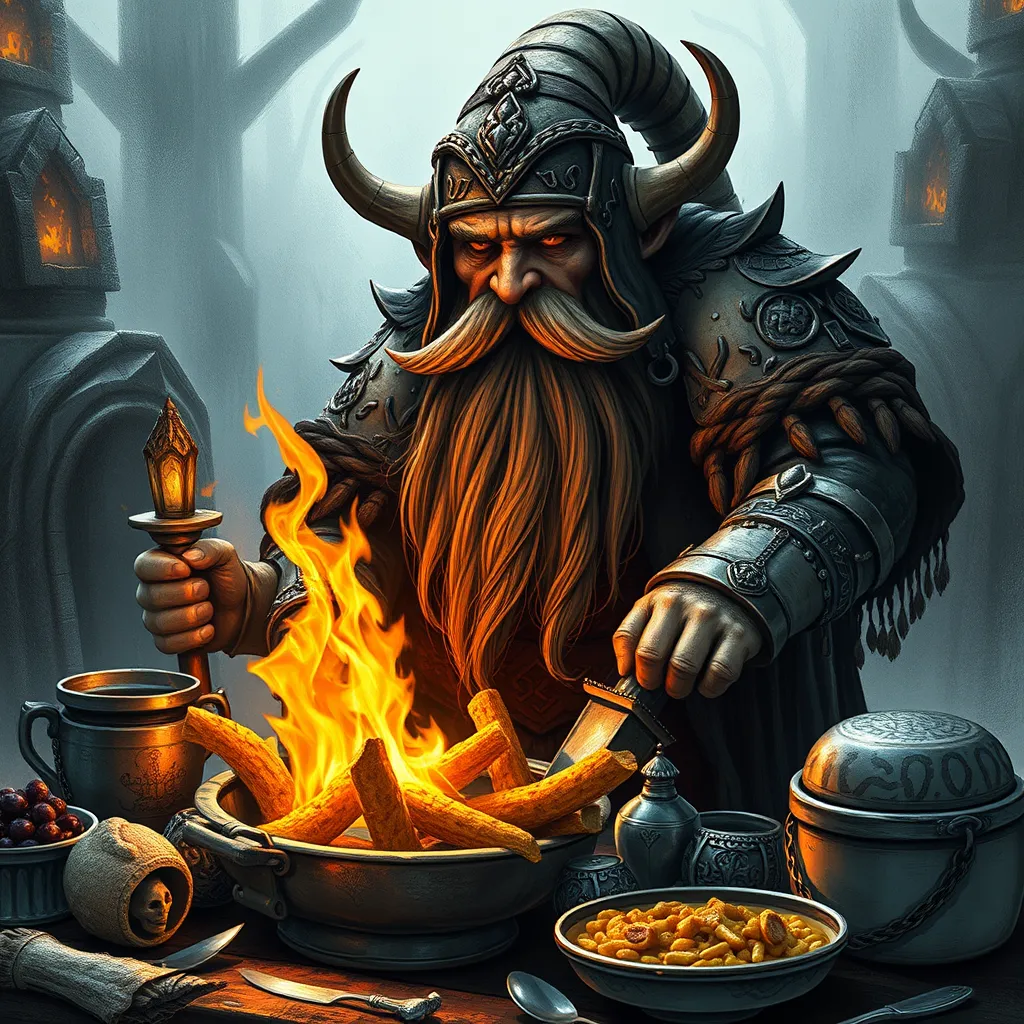The Dwarven Language: Deciphering the Hidden Codes and Symbols of Dwarven Communication
I. Introduction
Dwarven culture holds a significant place in the realm of fantasy literature, characterized by its rich history, strong values, and profound craftsmanship. Dwarves, often depicted as stout, resilient beings, are known for their expertise in mining, metallurgy, and stonework. Their culture emphasizes loyalty, honor, and a deep connection to their ancestral lands.
Language plays a pivotal role in shaping identity and heritage, serving as a vessel for culture, history, and tradition. The Dwarven language, with its unique phonetics and structure, not only conveys information but also encapsulates the spirit of the Dwarven people.
This article aims to explore the intricacies of the Dwarven language, shedding light on its historical context, structural components, and cultural significance.
II. Historical Context of Dwarven Language
A. Origins and evolution of the Dwarven language
The Dwarven language, often referred to as Khuzdul in Tolkien’s works, has ancient roots that trace back to the early days of Dwarven civilization. It is believed to have evolved from the languages spoken by the first Dwarves, shaped by their experiences and interactions over millennia.
B. Influence of surrounding cultures and languages
As Dwarves interacted with other races, such as Elves and Men, their language absorbed various influences. This exchange enriched the vocabulary and expressions used in Dwarven communication, although the core structure remained distinctively Dwarven.
C. Role of language in preserving Dwarven history and traditions
The Dwarven language serves as a historical archive, preserving tales of valor, craftsmanship, and tradition. Oral histories and written texts in Khuzdul encapsulate the essence of Dwarven life, ensuring that their legacy endures through generations.
III. Structure of the Dwarven Language
A. Phonetics: Unique sounds and pronunciation
The Dwarven language is known for its distinctive phonetic qualities. It features harsh consonants and guttural sounds, reflecting the rugged nature of the Dwarven people. Some key phonetic characteristics include:
- Strong emphasis on hard consonants like ‘k’, ‘t’, and ‘g’
- Frequent use of double consonants
- Vowel harmony, where vowels within a word harmonize in sound
B. Grammar: Key rules and sentence structure
Dwarven grammar is notably different from many human languages. Key features include:
- Subject-Object-Verb (SOV) sentence structure
- Inflection for nouns to indicate case and number
- Use of suffixes to convey tense and aspect in verbs
C. Vocabulary: Common words and phrases, including greetings and expressions
The Dwarven lexicon is rich and varied, containing terms that reflect their culture and environment. Some common words and phrases include:
- Greetings: “Khazâd ai-mênu!” (Dwarves are upon you!)
- Common words: “Balin” (a common name), “Durin” (a legendary Dwarf king)
- Expressions: “Baruk Khazâd!” (Axes of the Dwarves!)
IV. Symbols and Scripts in Dwarven Communication
A. Overview of Dwarven runes and their meanings
Dwarven runes, known as “Cirth,” are an essential aspect of their written communication. Each rune carries distinct meanings and often represents sounds rather than complete words. The runes are often used in both decorative and functional contexts.
B. The significance of symbols in Dwarven art and architecture
Symbols play a crucial role in Dwarven art, often depicting their heritage and beliefs. Architectural elements like doorways and temples are adorned with intricate carvings of runes, signifying protection and history.
C. How to recognize and interpret Dwarven scripts
Interpreting Dwarven scripts requires an understanding of the context and cultural significance. Scholars often study patterns, common symbols, and historical references to unlock the meanings behind ancient inscriptions.
V. Deciphering Dwarven Codes
A. Methods used by scholars and enthusiasts to decode Dwarven texts
Deciphering Dwarven texts involves a combination of linguistic analysis and cultural understanding. Scholars often employ methods such as:
- Comparative linguistics to identify roots and cognates
- Contextual analysis to interpret meanings based on historical and cultural background
- Collaboration with Dwarven cultural experts
B. Examples of ancient Dwarven inscriptions and their translations
Numerous ancient inscriptions have been uncovered, offering insights into Dwarven history. For instance:
- An inscription from the Mines of Moria reads: “Here lies Durin, the Deathless, King of the Longbeards.”
- A rune found in a Dwarven fortress translates to: “Strength and honor guard our home.”
C. The role of context and cultural understanding in interpretation
Context is paramount when interpreting Dwarven texts. Understanding the cultural backdrop—wars, alliances, and craftsmanship—provides depth to the translations and meanings of the texts.
VI. Dwarven Language in Modern Fantasy
A. Depictions of Dwarven language in popular media (books, movies, games)
The Dwarven language has been prominently featured in various forms of media, most notably in J.R.R. Tolkien’s “The Hobbit” and “The Lord of the Rings.” Video games like “Dungeons & Dragons” and “World of Warcraft” also integrate Dwarven languages into their lore.
B. Influence on contemporary fantasy languages and constructed languages (conlangs)
Dwarven language has inspired many contemporary fantasy languages. Its structure and phonetics have been studied and emulated by conlang creators, enhancing the depth of fantasy worlds.
C. Community efforts to learn and promote the Dwarven language
Various online communities and forums have emerged, dedicated to learning and promoting the Dwarven language. Resources include:
- Online courses and tutorials
- Translation projects for modern texts
- Social media groups for discussion and practice
VII. Challenges in Understanding Dwarven Communication
A. Misinterpretations and misconceptions about Dwarven language
Misinterpretations often arise from the rich symbolism and cultural nuances embedded in the Dwarven language. Common misconceptions include oversimplifying the language to mere grunts or battle cries.
B. The impact of translation on meaning and cultural significance
Translation can dilute the original meaning and cultural significance of Dwarven expressions. Nuances and idioms may lose their essence when rendered in other languages.
C. Preservation of authentic Dwarven expressions in a modern context
As Dwarven culture evolves, there is a growing concern over preserving authentic expressions. Efforts are underway to document and maintain traditional phrases and their meanings.
VIII. Conclusion
In summary, the Dwarven language is a profound element of Dwarven culture, encompassing historical depth, unique structure, and rich symbolism. Understanding this language offers valuable insights into the identity and heritage of the Dwarven people.
The journey of exploring and understanding the Dwarven language and culture is ongoing, inviting enthusiasts and scholars alike to engage with this fascinating aspect of fantasy literature.
Readers are encouraged to delve deeper into Dwarven heritage, whether through literature, art, or community engagement, to further appreciate the complexities and beauty of Dwarven communication.



